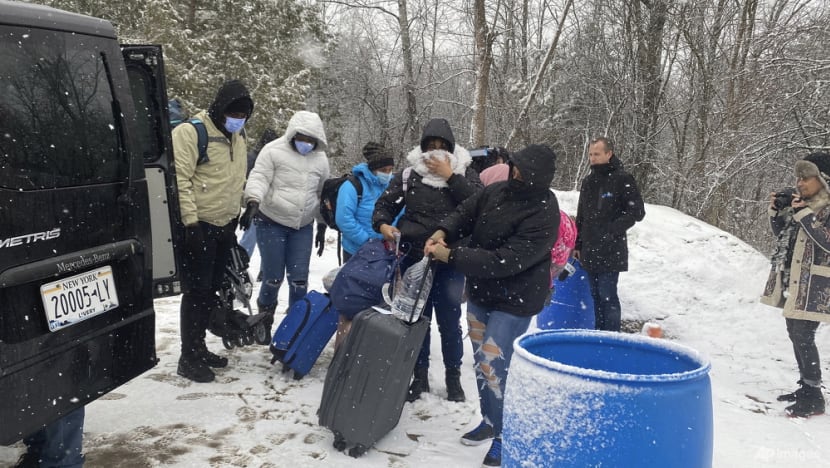Migrants still crossing US-Canada border through unofficial entry points, despite policy to stem the flow
A pact between both countries – known as the Safe Third Country Agreement – was expanded in March, allowing authorities to turn away migrants at unofficial crossings.

Community groups in Canada help refugees settle into their new surroundings.

This audio is generated by an AI tool.
MONTREAL: Asylum seekers are still attempting to cross unofficial entry points between the United States and Canada, more than six months after the rules were changed, said observers.
A pact between both countries – known as the Safe Third Country Agreement – was expanded in March, allowing authorities to turn away migrants at unofficial crossings including internal waterways.
Only those who meet a slim criteria of exceptions can apply for refugee status.
ASYLUM SEEKERS EXPLORE NEW ROUTES
Charities, however, warned that closing these pathways could play into the hands of traffickers or make the journey more dangerous as asylum seekers would then try to enter undetected.
“There are deaths every winter. People die trying to cross over illegally. So that will increasingly be the situation,” said Ms Grace Bubeck, a volunteer at community group Bridges not Borders.
“The other danger is people are trafficked. They find traffickers who take their money and bring them across and ultimately, traffickers are not concerned about safety.”
The US’ northern border is vast and stretches for nearly 9,000km, with more than 100 legal check points scattered along it.
But there are also unofficial crossings which straddle the US-Canada border.

Last year, almost 40,000 asylum seekers entered Canada through the irregular border crossings from the US, the majority of them along an unofficial entry point known as Roxham Road in upstate New York.
Meanwhile, thousands of migrants have also made their way into the US through the border, despite the risks of being arrested.
SEARCHING FOR A BETTER LIFE
Despite this, volunteers said people are still turning up and hoping to enter Canada, after travelling for hours by bus or taxi from New York City with no certainty of the road ahead.
Migrants told CNA that they left home in search of a better life.
Asylum seeker Osama Zein and his family, for instance, were forced to flee Chad, a landlocked country in central Africa, for their safety and had their sights set on reaching relatives in Canada.

The family had to travel through the US, but they have been turned away at the northern border several times for not having the right papers.
“When we went for the second time, they asked why we came without a proper notice, (and that we) have to bring a lawyer,” said Mr Zein.
“We are people trying to run from our country. Where can we get a lawyer? Where can we get the money to afford a lawyer?”
He is one of the many asylum seekers staying at Rip Van Winkle Motel in Plattsburgh in New York.
The motel’s manager Nidhi Patel has been sympathetic to the plight of these travellers, sometimes allowing those who have run out of money to stay for free.
“I feel very bad for them, because they have a reason. Everyone has a reason to go there (Canada),” she said.
“Some people go for medical purposes, some people want jobs. Schooling is good there. So they have different reasons. They are really excited to go there, they want to settle down in Canada. But after that, it’s hard for them.”
HELPING REFUGEES SETTLE INTO NEW SURROUNDINGS
For those who manage to make the crossing, an uncertain future awaits.
Community groups such as Maison D’haiti help them settle into their new surroundings, offering English lessons and children’s programmes.
But volunteers said there has been confusion over eligibility criteria and documentation due to the new rules.
“One thing we’re asking is that the Third Safe Country Agreement has to be removed, because this is what's causing all the problems we have right now,” said advocate Frantz Andre.
“We think the fact that they’re making it even harder is not giving Canada the image to be the welcoming country that it used to be.”














